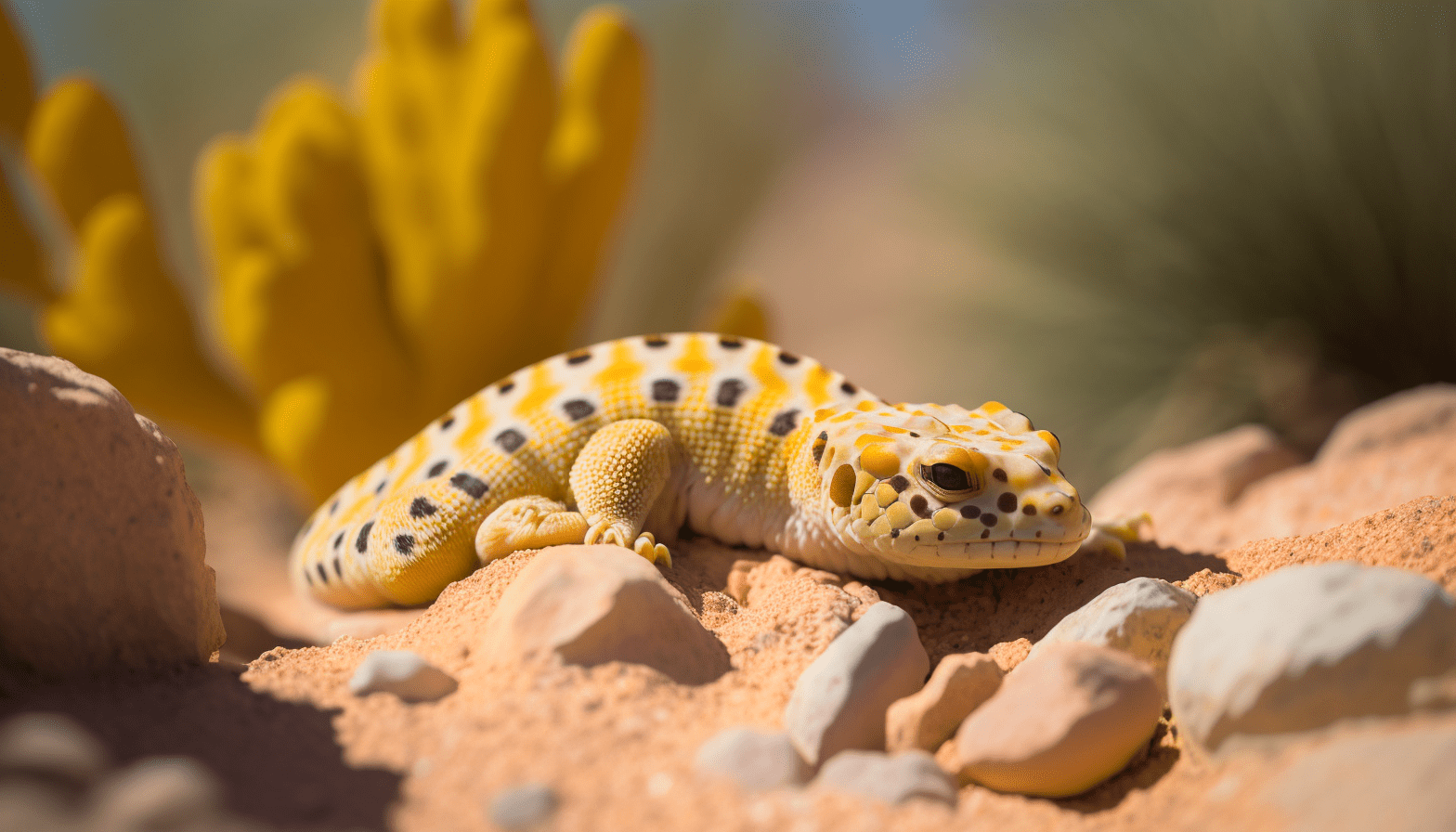Leopard geckos are one of the most popular pet reptiles, known for their unique appearance and docile nature. They are native to the arid regions of Afghanistan, Pakistan, and parts of India. These reptiles are nocturnal and spend most of their time sleeping during the day.
If you own a leopard gecko, you may be wondering why they sleep so much. In this article, we will explore the reasons behind leopard gecko’s sleeping habits and what you can do to ensure they are sleeping well.
Contents
2. Normal Sleeping Habits of Leopard Geckos
Leopard geckos are nocturnal animals, which means they are active at night and sleep during the day. On average, a leopard gecko will sleep for 12-14 hours a day, but this can vary depending on the age and overall health of the gecko.
During sleep, leopard geckos may adopt different positions, such as curling up or lying flat on their stomach. They may also dig into the substrate to create a burrow-like environment, which provides them with a sense of security and privacy.
To ensure your leopard gecko is sleeping well, it’s essential to create an ideal sleeping environment. This includes providing a hide box or shelter where they can feel safe and comfortable.
3. Reasons Why Your Leopard Gecko Might be Sleeping More Than Usual
While it’s normal for leopard geckos to sleep for extended periods, there are instances where they may sleep more than usual. Here are some reasons why this might be happening:
A. Brumation: Leopard geckos, like many reptiles, go through a period of brumation during the winter months. Brumation is similar to hibernation in mammals, where the animal enters a state of dormancy to conserve energy. During this period, leopard geckos may sleep for extended periods, and their metabolic rate decreases.
B. Health issues: Leopard geckos that are sick or injured may sleep more than usual as their body tries to recover. Common health issues that can affect leopard geckos include parasitic infections, respiratory infections, and digestive problems.
C. Age: As leopard geckos age, they tend to sleep more. This is especially true for older geckos that are past their breeding age.
D. Pregnancy: If your female leopard gecko is pregnant, she may sleep more than usual. This is because the energy demands of pregnancy are high, and sleeping helps conserve energy.
If you notice that your leopard gecko is sleeping more than usual, it’s essential to observe them for any signs of illness or injury.
How to Ensure Your Leopard Gecko is Sleeping Well
As a leopard gecko owner, you may wonder why your beloved pet is always sleeping. While it’s true that leopard geckos are nocturnal creatures and tend to sleep during the day, excessive sleeping can be a sign of an underlying issue. In this article, we’ll discuss some of the ways you can ensure your leopard gecko is sleeping well.

- Temperature Regulation One of the most crucial aspects of leopard gecko care is providing the right temperature in their enclosure. Leopard geckos are cold-blooded creatures and rely on external heat sources to regulate their body temperature. If the temperature in their enclosure is too low, they may not be able to digest their food properly, leading to lethargy and excessive sleeping. On the other hand, if the temperature is too high, they may become dehydrated and suffer from heat stroke.
To ensure your leopard gecko is sleeping well, you need to provide a temperature gradient in their enclosure. This means having a warm side and a cool side, with a temperature range of 75-85°F on the warm side and 70-75°F on the cool side. You can achieve this by using a heat mat or a ceramic heat emitter. It’s also essential to monitor the temperature regularly using a thermometer or a temperature gun.
- Lighting Leopard geckos are also sensitive to light and require a proper light cycle to maintain their circadian rhythm. A disrupted light cycle can cause stress and affect their sleeping pattern. It’s recommended to provide 10-12 hours of light during the day and complete darkness at night.
You can achieve this by using a timer for your lighting setup. Additionally, it’s crucial to choose the right type of lighting. Leopard geckos require UVB light to synthesize vitamin D3, which is essential for calcium absorption. However, you need to ensure that the UVB light is not too strong as it can cause eye damage.
- Diet A balanced diet is essential for leopard geckos to stay healthy and active. If they are not getting the right nutrients, they may become lethargic and sleep excessively. It’s essential to provide a diet that consists of insects, such as crickets, mealworms, and dubia roaches.
It’s also essential to dust the insects with a calcium supplement to ensure proper bone growth and prevent metabolic bone disease. Additionally, avoid feeding your leopard gecko with pinkies or mice as they are high in fat and can cause obesity.
- Enrichment Leopard geckos are curious creatures and require mental stimulation to prevent boredom and stress. Providing enrichment activities can help them stay active and improve their sleeping patterns. You can provide hiding spots, climbing structures, and different types of substrates to encourage natural behaviors.
Conclusion
In conclusion, excessive sleeping in leopard geckos can be a sign of an underlying issue. By ensuring proper temperature regulation, lighting, diet, and enrichment activities, you can ensure your leopard gecko is sleeping well and living a healthy life.


